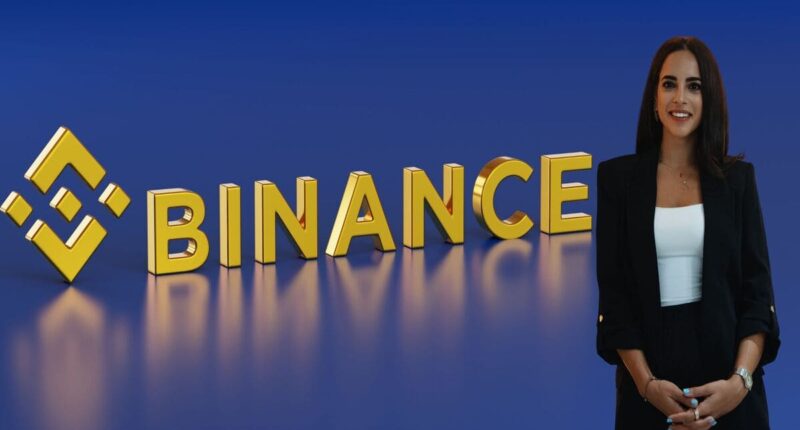At a time when crypto narratives oscillate between wild volatility and cautious optimism, the woman at the helm of Binance’s operations in Dubai offers something rare: clarity.
Stephanie Emile, General Manager of Binance Dubai, is not caught in the usual noise of token launches or exchange drama. In a conversation with Coin Headlines, she lays bare a vision that is both sober and ambitious. At the heart of it lies regulation — not as a constraint but as a catalyst. For Binance, the world’s largest cryptocurrency exchange, regulation isn’t something to run from, it is something to embrace.
“Right now, you’re going to see a lot of regulation come in,” she says matter-of-factly. “Regulators are starting to get comfortable. Countries that were previously opposed to crypto are now realizing, ‘Okay, this isn’t crazy. This isn’t an absolute mess.’”
That quiet shift in tone — from suspicion to cautious acceptance — may well define the next phase of global crypto adoption. In Stephanie’s view, regulation is not a hammer but a scaffold.
“People initially thought regulation is there to prevent things,” she notes, “but it really is there as support. It adds an extra layer of protection for users. It’s not there to kill the product.”
For Dubai and the UAE, that principle isn’t just aspirational — it’s operational. The Virtual Assets Regulatory Authority (VARA) has been active for about three years, and Binance, one of the first major players to get a license under VARA, sees it as more than just a compliance checkpoint.
“Our relationship with VARA has been great. We’ve been able to offer the same products — just with an extra layer of protection. And that’s been great for users.”
Crypto ≠ Anarchy. It’s infrastructure.
Crypto purists may flinch at the word “compliance.” After all, Bitcoin was born out of defiance — a P2P rebellion against the banking establishment. But Stephanie views the ideological origin story with a sense of grounded realism.
“What is crypto, really?” she asks. “Is it just a digital form of value, or is it about building value in new ways? My perspective is that crypto is about banking the unbanked. And we’re not there yet.”
She sees the promise, particularly in underserved regions like Africa, where decentralized finance (DeFi) can offer banking solutions without traditional infrastructure. But the leap from potential to practice requires more than idealism.
“The underlying infrastructure to support real financial inclusion — it’s not there yet. That’s where platforms like Binance can play a role.”
Her vision isn’t anti-bank, anti-state, or utopian. It’s pragmatic — a new layer atop existing systems, not a bomb beneath them. That realism stretches into the GCC as well, where the regulatory landscape is increasingly crypto-friendly, if not crypto-first.
“The UAE opened its arms to not just large exchanges, but also to smaller crypto projects and protocols,” she says. “The ecosystem here is being built from multiple angles — the central bank, the regulators, even traditional banks. Everyone’s talking.”
Not a revolution. A renaissance.
That raises an inevitable question: Is crypto still on track to overthrow traditional finance, or has it settled into becoming its high-tech sibling?
“Crypto is not so different from traditional finance,” Stephanie says. “The only real difference is the tech. In some ways, crypto is more sophisticated. You can trace things better.”
The idea of crypto “killing” banks — as Trump-style maximalists often predict — doesn’t impress her.
“Do I think crypto means the end of finance as we know it? No. But it’s going to change how finance works. For example, cross-border payments are still insanely hard. Why should I pay huge spreads just to send money to the UK? Crypto can cancel that — and when it does, it’ll be amazing.”
But even as she critiques inefficiencies in the financial system, she’s quick to differentiate between practical value and speculative noise. When asked about real-world use cases and institutional adoption, her answer is direct:
“Users need it to be easier. Honestly, I sat on a panel yesterday and people were going on about RWAs and tokenization. I don’t understand half the stuff onstage,” she laughs. “But that’s the point — users shouldn’t have to.”
Binance as a bridge, not a bunker
If the UAE is building the stadium, Binance wants to be the architect that draws up the blueprints — for regulators, for banks, and for everyday users.
“As the biggest exchange, we do have a responsibility. We spend a lot of time with regulators and governmental bodies, explaining what crypto is, how the technology works. Not everyone needs to understand the tech. But governments do need to know how to keep users safe.”
That role is no longer just operational; it’s almost diplomatic. Binance, once vilified as a regulatory outsider, now operates in an advisory capacity to nations looking to enter the crypto fold.
“You have to have those conversations. Three years ago, that meant getting the right people into the room with regulators — people with the right expertise. We’re doing that now.”
Crypto as the new oil?
A pointed analogy emerges during the conversation — one that has been murmured across boardrooms in Riyadh, Doha, and Abu Dhabi: Is Bitcoin becoming the new oil?
“I’m not going to say much, but I think you hit the nail on the head,” Stephanie replies, smiling. “Why not? If you have the funds, whether it’s into BTC, AI, or anything — go for it. It’d be silly not to.”
She grew up in Saudi Arabia. She knows the region’s hunger for leadership — and its comfort with competition.
“Whether they work together or compete, it doesn’t matter. Competition is good. And I love that the GCC is doing something instead of sitting back.”
Trump, geopolitics & crypto volatility
Crypto’s tethering to geopolitical undercurrents is no longer theoretical. The U.S. election cycle, especially with Trump rebranding himself as the “crypto president,” is now a direct variable in Bitcoin’s price behavior.
“I don’t think we should be surprised,” Stephanie shrugs. “The moment institutions came in, this was inevitable. Of course the markets react when Trump talks. We’re all acting surprised, but we really shouldn’t be.”
Still, that doesn’t mean the U.S. is leading.
“The UAE is ten steps ahead. They’re not afraid to try things, and if they get it wrong, they just learn and improve. That kind of attitude — that’s what makes the UAE special.”
The next five years: A seamless, tokenized reality
As for the road ahead? Stephanie sees mass adoption — not as fantasy, but inevitability.
“Walk up, tap and pay with a crypto card? Absolutely. In the UAE, that’s going to happen in the next couple of years.”
“You’ve got AED stablecoins coming out. You’ve got big banks working with crypto players. Why wouldn’t you use AED stablecoins? It’s seamless.”
And when mass adoption does come, it won’t be because of ideology. It’ll be because the experience is easier.
“Users don’t care if it’s on the blockchain. They just want it to work. I’d love if a wallet address was just three little letters and not a long key. The crypto natives are understanding they also need to pivot and the conversations around that are happening.”
In Stephanie Emile’s world, the crypto revolution doesn’t need a manifesto. It needs good UX.
And that, more than anything, might be the most powerful shift of all.



